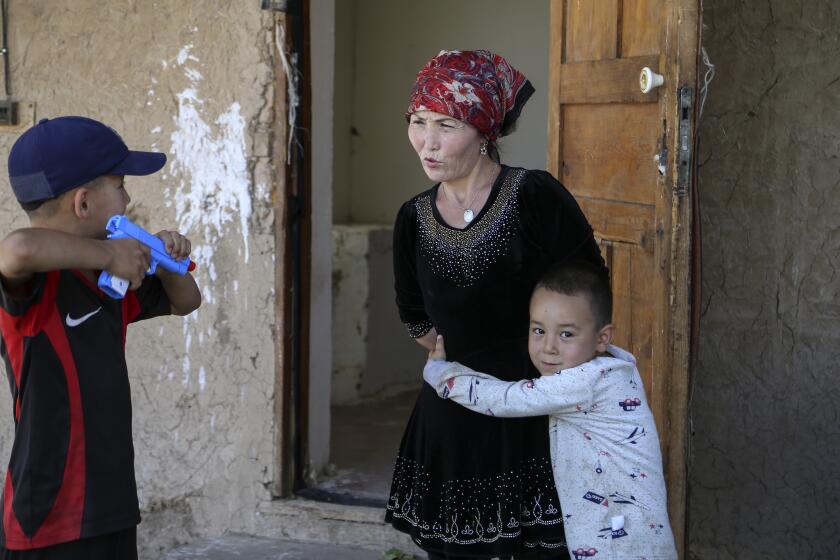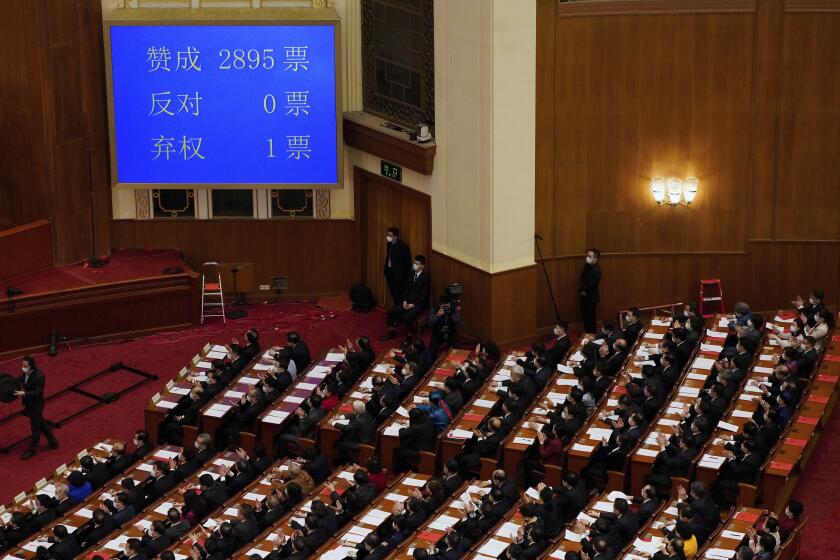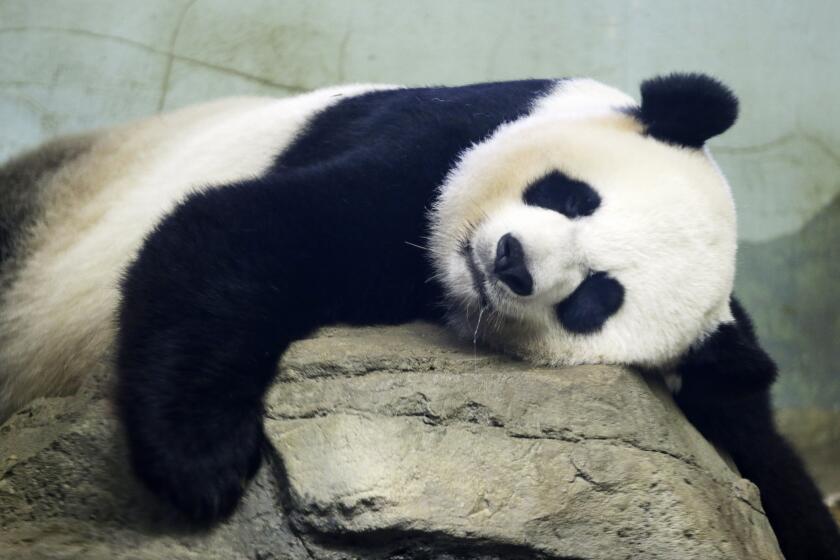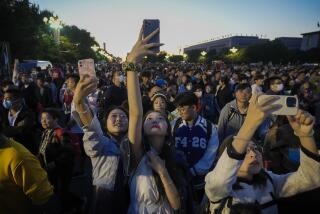China’s population growth edges closer to zero in new census data
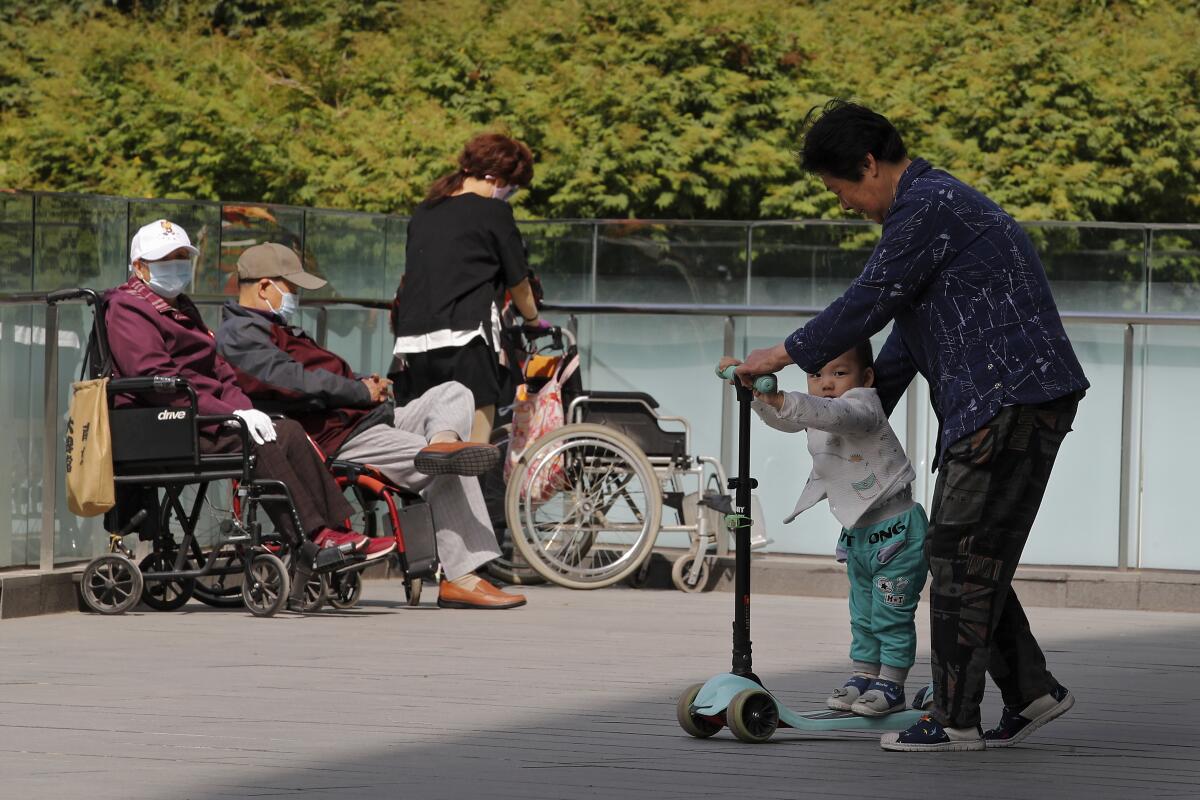
BEIJING ‚ÄĒ China‚Äôs weak population growth is falling closer to zero as fewer couples have children, government data showed Tuesday, adding to strains on an aging society with a shrinking workforce.
The population rose by 72 million people over the past 10 years to 1.411 billion in 2020, the National Bureau of Statistics announced after a once-a-decade census. It said annual growth averaged just 0.53%.
Chinese leaders have enforced birth limits since 1980 to restrain population growth but worry that the number of working-age people is falling too fast, disrupting efforts to create a prosperous economy. They have eased birth limits, but couples are put off by high costs, cramped housing and job discrimination against mothers.
‚ÄúLabor resources are still abundant,‚ÄĚ the statistics agency director, Ning Jizhe, said at a news conference.
The percentage of children in the population edged up compared with 2010, while the share of those 60 and older rose faster. The pool of potential workers aged 15 to 59 shrank to 894 million, down about 5% from a 2011 peak of 925 million.
Changes in birth limits and other policies ‚Äúpromoted a rebound in the birth population,‚ÄĚ Ning said. However, he said there were 12 million babies born last year, which would be down 18% from 2019‚Äôs report of 14.6 million.
Beijing says it has met its goal of wiping out extreme poverty in China by the end of 2020. The top-down effort has disrupted untold individual lives.
China, along with Thailand and some other developing Asian countries that are aging fast, faces what economists call the challenge of whether it can grow rich before it grows old. Some forecasters warn that China faces a ‚Äúdemographic time bomb.‚ÄĚ
Reflecting the issue’s sensitivity, the statistics agency took the unusual step last month of announcing that the population grew in 2020 but gave no total. That looked like an effort to calm companies and investors after the Financial Times reported that the census might have found a surprise decline.
‚ÄúWe are more concerned about the fast decline in the working-age population,‚ÄĚ said Lu Jiehua, a professor of population studies at Peking University.
The population of potential workers aged 15 to 59 will fall from three-quarters of the total in 2011 to just above half by 2050, according to Lu.
A state-orchestrated campaign is reducing births among the minority Uighurs of China’s far west Xinjiang region with brutal efficiency.
‚ÄúIf the population gets too old, it will be impossible to solve the problem through immigration,‚ÄĚ said Lu. ‚ÄúIt needs to be dealt with at an early stage.‚ÄĚ
Couples who want a child face daunting challenges. Many share crowded apartments with their parents. Child care is expensive and maternity leave short. Most single mothers are excluded from medical insurance and social welfare payments.
Some women worry that giving birth could hurt their careers.
‚ÄúWhen you have a kid, you take pregnancy leave, but will you still have this position after you take the leave?‚ÄĚ said He Yiwei, who is returning from the United States after obtaining a master‚Äôs degree. ‚ÄúRelative to men, when it comes to work, women have to sacrifice more.‚ÄĚ
China approves plans to exert more power over Hong Kong, compete with the U.S. in technology and bolster Mandarin-language education.
Japan, Germany and some other rich countries face the same challenge of supporting aging populations with fewer workers. But they can draw on investments in factories, technology and foreign assets. By contrast, China is still a middle-income country with labor-intensive farming and manufacturing.
The decline in the working-age population ‚Äúwill place a cap on China‚Äôs potential economic growth,‚ÄĚ Yue Su of the Economist Intelligence Unit said in a report. That is a ‚Äúpowerful incentive to introduce productivity-enhancing reforms.‚ÄĚ
The International Monetary Fund is forecasting Chinese economic growth of 8.4% this year following a rebound from the COVID-19 pandemic. The ruling Communist Party wants to double output per person from 2020 levels by 2035, which would require annual growth of about 4.7%.
The numbers reported Thursday reflect a gain of 11.8 million people, or 0.8%, over the official estimate for 2019, when the government says the population edged above 1.4 billion for the first time.
Start your day right
Sign up for Essential California for the L.A. Times biggest news, features and recommendations in your inbox six days a week.
You may occasionally receive promotional content from the Los Angeles Times.
The working-age population fell to 63.3% of the total from 70.1% a decade ago. The cohort of those younger than 14 expanded by 1.3 percentage points to 17.9%. Those 60 and older ‚ÄĒ a group of 264 million people who on their own would be the world‚Äôs fourth-most-populous country ‚ÄĒ rose 5.4 percentage points to 18.7% of the population.
The Communist government took its biggest recent step in demographic control when rules that limited many couples to having only one child were eased in 2015 to allow two.
However, China’s birth rate, paralleling trends in South Korea, Thailand and other Asian economies, already was falling before the one-child rule was instituted. The average number of children per mother tumbled from above six in the 1960s to below three by 1980, according to the World Bank.
Demographers say official birth limits concealed what would have been a further fall in the number of children per family.
North Dakota has outpaced every other in growing its Asian American communities, even as California keeps its lead as the state with the largest Asian American population.
The one-child limit, enforced with threats of fines or loss of jobs, led to abuses, including forced abortions. A preference for sons led parents to kill baby girls, prompting warnings that millions of men might be unable to find a wife, fueling social tension.
Thursday’s data showed China has 105.7 million men and boys for every 100 million women and girls, or about 33 million more males.
The ruling party says the policy averted shortages of food and water by preventing as many as 400 million potential births. But demographers say that, if China had followed Asian trends, the number of additional babies without controls might have been as low as a few million.
Some researchers say China’s population already is shrinking.
In China, it’s panda census time
Yi Fuxian, a senior scientist in obstetrics and gynecology at the University of Wisconsin-Madison, says the population started to fall in 2018. His book ‚ÄúBig Country With an Empty Nest‚ÄĚ argued against the one-child limits.
‚ÄúChina‚Äôs economic, social, educational, tech, defense and foreign policies are built on the foundation of wrong numbers,‚ÄĚ said Yi.
The latest data put China closer to be overtaken by India as the most populous country, which is expected to happen by 2025.
India’s population last year was estimated by the United Nations Department of Economic and Social Affairs at 1.38 billion, or 1.5% behind China. The agency says India should grow by 0.9% annually through 2025.
More to Read
Sign up for Essential California
The most important California stories and recommendations in your inbox every morning.
You may occasionally receive promotional content from the Los Angeles Times.

